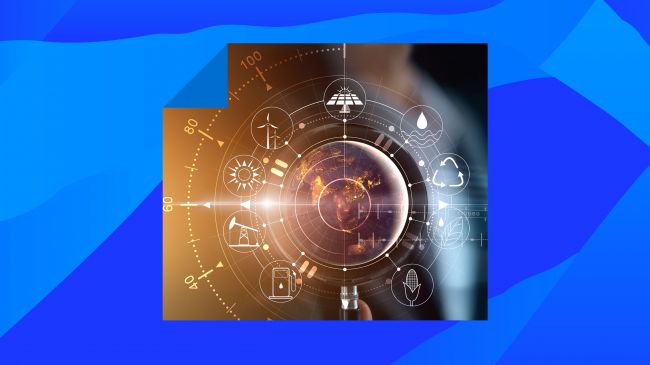Technology is something that will always advance, changing various aspects of our life everyday. One of the most prominent technologies to undergo major development in recent years is Virtual Reality.
VR changes our view of how we can interact with applications and other digital content, this can span into multiple industries such as video gaming, education and healthcare. This article will show how VR has developed, its unique features and how it has benefited both gaming and education.
Features of Virtual Reality and How It Works

Virtual Reality is technology that simulates a 3D digital environment that allows users to interact with the environment and its objects as if they were present in this digital world.
In order to get into VR, you will need a VR headset, motion controllers and sensors to detect them. Below the specific features of VR and how it functions will be explained:
- Immersive Experience – Virtual Reality uses the players senses like sight hearing and a form of touch to engage with the environment using the VR headset and controllers.
- Head Tracking – VR has sensors as mentioned earlier, that use gyroscopes and other technologies to track the movement of your head that allow you to look around the virtual environment as.
- Motion Tracking – Motion controllers use built in sensors to track player movement, enabling users to interact with objects in the digital space.
- 3D Audio – VR, depending on the application, uses spatial and surround sound audio to provide sound from any direction allowing users to hear sounds from different directions.
- Haptic Feedback – Some controllers in VR systems use sensory feedback that allow the user to feel things like touch and vibrations when you interact within the virtual world.
VR works by using a VR headset to render a 3D digital environment with computing hardware. This is then displayed in the lens of the VR headset that gives depth to the space by showing different images of the same space to each eye.
The headset and controllers move in the 3D environment using motion sensors, which is why users are able to interact with the digital world.
The Intersection of VR and Gaming
Developers in the gaming industry are one of the biggest adopters with regard to VR applications and technology. VR gaming has advanced the level of interactivity in a digital environment different from traditional experiences in gaming. Here are some of the features that are promoted in VR gaming:
- Immersive Gameplay – Players in VR environments physically move, walk and interact with virtual objects, making the game more engaging than conventional games that do not use VR.
- First-Person Perspective – VR games usually take on the first person perspective, making the player feel that they have been transported inside of the game, instead of controlling the avatar from a distance.
- Multiplayer VR Experiences – Multiplayer works the same in VR as it does traditionally enabling players to connect to the same server in order to play together fostering friendships and teamwork.
- Physical Activity in Gaming – VR games require your full body to move, this gets your body active, especially if you're playing for some time, giving VR gaming a fitness aspect that benefits players.
Benefits of VR in Gaming
VR provides a unique experience in gaming that has advantages for players that are listed below:
- Enhanced Realism – VR games offer a new sense of realism to players, by using simulated real world physics and directional sound where players can interact with physics objects naturally.
- Greater Engagement and Immersion – As said further above, VR allows players to fully enter a virtual world and interact in it. This provides a deeper level of engagement than traditional games that only use a screen..
- More Active Gameplay – Unlike traditional games where players remain seated, VR gaming often involves physical movement. This promotes exercise and can contribute to better health outcomes.
VR for Education and the Benefits of Educational Games
While gaming has been a primary focus for VR, its impact on education is equally promising. Because you are able to engage with the environment, complex subjects will become easier to learn. With VR, this allows users to have hands-on experience with virtual reality educational games.
How VR is Used in Education
Virtual Field Trips – Students are able to use vr to go to interactive museums and historical sites, outer space or even view the ocean, making the learning more immersive.
Science and Medical Training – Medical students and those in training can use VR to simulate surgery to practice them and understand human anatomy without real world risks.
STEM Learning – Subjects like physics, science and mathematics are made better with vr by allowing students to visualise the abstract concepts and interact with them.
Language Learning – VR allows you to learn languages by practicing conversations in immersive visual settings.
Benefits of Educational VR Games
Hands-On Learning – Games that promote vr education give the users an interactive space where they can engage with learning materials instead of passively reading or watching the information in video format.
Increased Retention and Understanding – Studies report that students who learned subjects in a virtual environment retained the information better than when read from a textbook.
Encourages Curiosity and Exploration – In order to encourage learning and curiosity, students use vr to search their chosen subjects deeper and foster a love for learning in this new environment.
Conclusion
With advancements in technology, virtual reality has contributed greatly to the development of games and education systems. VR offers realistic and physical interaction in a virtual world. Beyond this VR could play a role in transforming the way students interpret and engage with information on various subjects.
Post Comment
Be the first to post comment!
Related Articles




